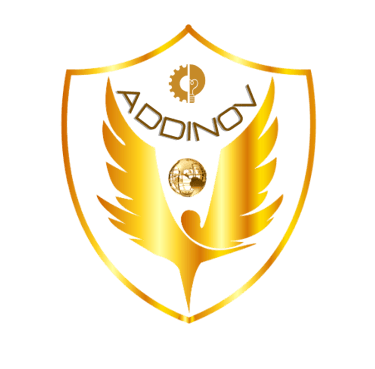Let us collaborate to foster global growth and development together.
Practical Approaches to Sourcing and Distribution
Streamline your business with practical approaches to sourcing and distribution. Learn actionable strategies to enhance efficiency and reduce costs today!
REAL-WORLD APPLICATIONS
11/8/20243 min read


Practical Approaches to Sourcing and Distribution
Meta Description: Streamline your business with practical approaches to sourcing and distribution. Learn actionable strategies to enhance efficiency and reduce costs today!
Introduction: The Backbone of Business Success
Effective sourcing and distribution are the twin pillars of a thriving business. Whether you're a small enterprise or a large corporation, finding the right suppliers and ensuring products reach customers on time can make or break your operations. In this guide, we’ll explore actionable strategies to improve your sourcing and distribution processes while minimizing costs and maximizing efficiency.
The Importance of Sourcing and Distribution
Why Sourcing Matters
Sourcing isn’t just about finding the cheapest supplier—it’s about balancing cost, quality, and reliability. A strong sourcing strategy ensures you get high-quality materials or products that align with your brand’s promise.
Key Benefits of Smart Sourcing:
Cost Efficiency: Secure competitive pricing without compromising quality.
Supplier Relationships: Build long-term partnerships that foster trust and dependability.
Risk Management: Diversify suppliers to reduce reliance on a single source.
The Role of Distribution
Distribution is how your product gets from the factory floor to the customer’s doorstep. An optimized distribution network improves delivery times, reduces costs, and enhances customer satisfaction.
Did You Know? Companies with strong distribution systems are 2.5 times more likely to meet customer expectations for on-time delivery.
Practical Approaches to Sourcing
1. Perform Supplier Audits
Don’t just rely on a supplier’s claims—verify their capabilities through regular audits.
What to Check During an Audit:
Production Capacity: Can they handle your order volume?
Quality Standards: Are they certified by relevant industry bodies?
Ethical Practices: Ensure compliance with labor and environmental laws.
Pro Tip: Use tools like Sedex or EcoVadis to assess supplier sustainability and ethics.
2. Leverage Technology
Technology simplifies sourcing by providing access to global supplier databases and streamlining communication.
Recommended Tools:
Alibaba: For finding international suppliers.
Coupa: For spend management and supplier tracking.
Slack or Microsoft Teams: For seamless communication with suppliers.
Example: A small apparel brand reduced its sourcing costs by 20% by using digital platforms to compare multiple suppliers.
3. Establish Clear Contracts
A robust contract protects both parties and sets expectations. Include terms related to:
Delivery timelines
Payment terms
Quality benchmarks
Penalties for non-compliance
Practical Approaches to Distribution
1. Optimize Your Supply Chain
An efficient supply chain minimizes delays and maximizes profits.
How to Optimize:
Use Data Analytics: Track key metrics like delivery times and cost per shipment.
Adopt Just-in-Time (JIT) Practices: Reduce inventory holding costs by aligning production with demand.
Example: Toyota’s JIT system is a classic case of supply chain optimization, saving millions annually.
2. Partner with Third-Party Logistics (3PL) Providers
3PL companies handle shipping, warehousing, and logistics, allowing you to focus on core business activities.
Advantages of 3PL:
Expertise in managing international shipping regulations.
Scalability to accommodate fluctuating demand.
Cost savings through shared logistics networks.
Pro Tip: Research providers like DHL Supply Chain or FedEx Logistics to find a partner that aligns with your needs.
3. Explore Last-Mile Delivery Innovations
Last-mile delivery—getting the product from a distribution center to the customer—is often the most expensive and complex part of distribution.
Strategies for Improvement:
Use Local Delivery Services: For faster, community-driven deliveries.
Embrace Technology: GPS tracking and route optimization tools improve efficiency.
Experiment with Drones or Autonomous Vehicles: Emerging trends can significantly cut costs.
Overcoming Common Challenges
Managing Rising Costs
With inflation and fuel price fluctuations, keeping costs under control is a constant battle.
Solution:
Negotiate bulk discounts with suppliers.
Invest in energy-efficient transportation to reduce fuel expenses.
Handling Supply Chain Disruptions
Disruptions like natural disasters or geopolitical tensions can derail operations.
Solution:
Maintain a buffer stock of critical materials.
Diversify suppliers across multiple regions to reduce risk.
Conclusion: Building a Resilient Sourcing and Distribution Strategy
Effective sourcing and distribution are about more than saving money—they’re about creating a system that supports your business goals while delivering exceptional value to customers. By auditing suppliers, leveraging technology, optimizing your supply chain, and embracing innovations like last-mile delivery solutions, you can build a robust system that adapts to changing market conditions.
Ready to take your sourcing and distribution strategy to the next level? Leave a comment below or check out our related article on Global Supply Chain Management Techniques.
Innovation
Cutting-edge solutions for industrial efficiency and productivity.
© 2024. All rights reserved.


